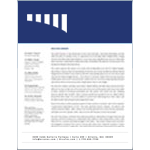
U.S. Economic News
April 29, 2019
U.S. Economic Indicators
Disposable personal income remained flat in March after rising 0.1% in February, while real personal consumption expenditure (PCE) rose 0.7% in March. The PCE price index rose 0.2% (up 1.5% Y/Y) and the core price index was unchanged (up 1.6% Y/Y) in March. BEA Report
U.S. News
According to the Wall Street Journal, the U.S.-Mexico-Canada Agreement (USMCA) appears increasingly unlikely to pass Congress before next year’s presidential election due to bipartisan criticism. Democrats are pushing for the agreement to include labor protections for workers in Mexico, while some Republicans are insisting on the removal of steel and aluminum tariffs imposed on Canada and Mexico. WSJ
The New York Times reports that U.S. Treasury Secretary Steven Mnuchin announced Sunday that trade talks between the U.S. and China are “into the final laps.” Secretary Mnuchin travels to China Monday with U.S. trade negotiator Robert Lighthizer to resolve remaining issues, including China’s practice of subsidizing domestic industries and the U.S.’s move to end China’s waiver allowing it to import oil from Iran. NYT